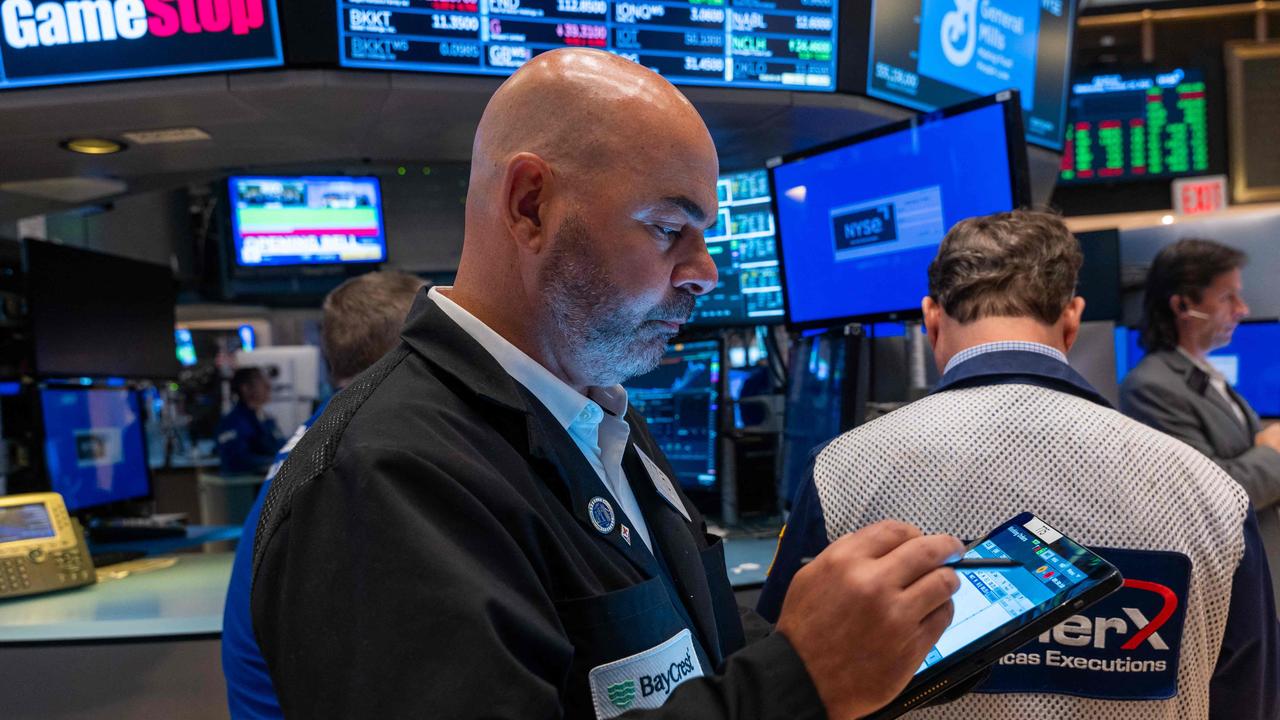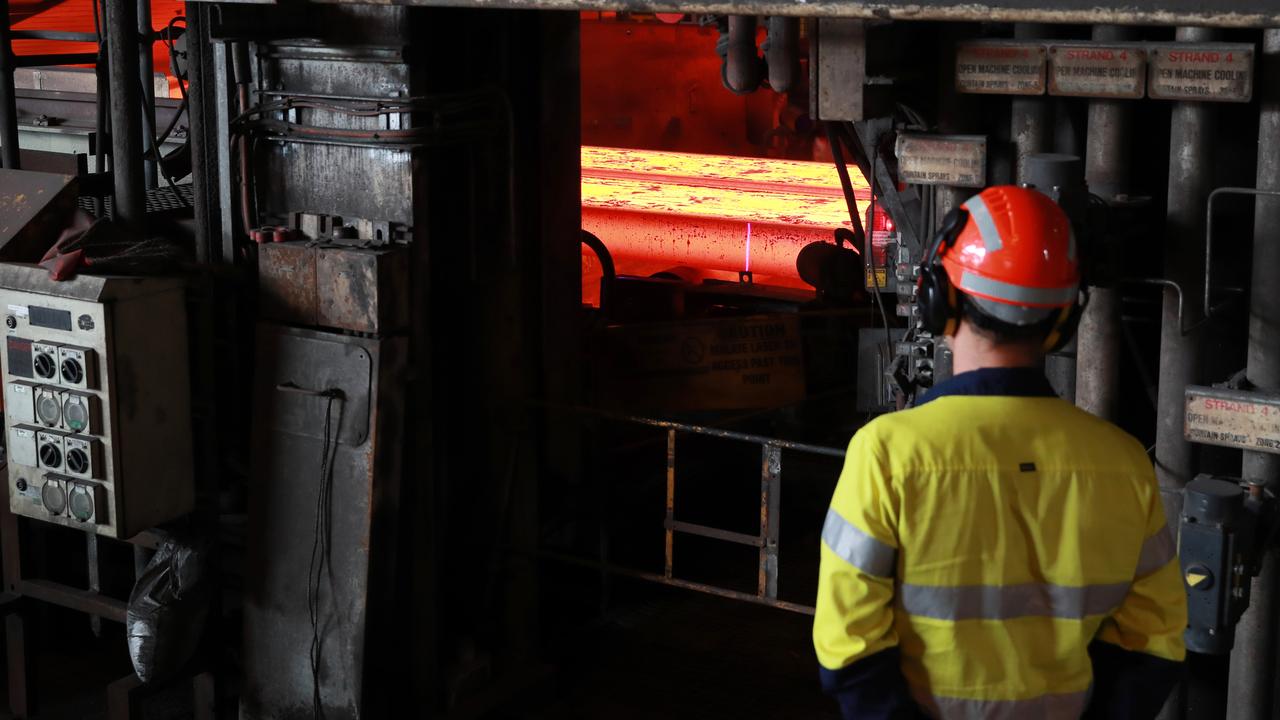Telstra Ventures reveals investment recipe after 10 years and five ‘decacorns’
What started as a ‘humble’ venture capital fund, with $40m from Telstra’s balance sheet, has grown into an independent force with more than $1bn in assets.

Business
Don't miss out on the headlines from Business. Followed categories will be added to My News.
A decade ago, start-ups were grateful for any type of funding. Now the tables have turned, with fledgling businesses becoming increasingly picky when selecting investors.
It is a theme familiar to Telstra Ventures’s co-managing director Matthew Koertge, despite overseeing one of Australia’s biggest venture capital firms, with more than $1bn under management.
Like many other funds, he now finds himself pitching to entrepreneurs rather than start-ups knocking on the door, cap in hand, underscoring the biggest shift since Telstra Ventures was formed a decade ago.
“We tend to pitch to entrepreneurs,” Mr Koertge said, speaking on the firm’s 10th anniversary.
“One of the things that we find is that entrepreneurs today have incredible businesses and they know it and they can really choose who they want to work with. So entrepreneurs are in a much stronger position now. A lot of the venture funds over the last 10 years have been much more focused on how can we really help out our portfolio companies and what can we do to really add value. So the playing field has definitely shifted.”
And when it comes to value, Telstra Ventures – which began with $40m from Telstra’s balance sheet in 2011 before being spun off into a independent fund three years ago – has secured more than 85 investments, 16 of which have hit “unicorn” status: a $1bn valuation.
Five have become “decacorns”, a new breed of start-ups with a market value of at least $US10bn ($13.7bn). Its investments include Snap ($US50.71bn) CrowdStrike ($US35.95bn), DocuSign ($US18.2bn), Auth0 ($1.9bn), BigCommerce ($1.74bn), Skillz ($1.03bn) and ASX-listed Whispir ($173m).
Mr Koertge said a third of its portfolio had achieved “exits”, creating $US150bn in public market value, and “through our revenue-bearing relationships, we have driven $US400m in revenue to more than 40 per cent of our portfolio companies”.
They are big numbers, but entrepreneurs are looking at more than chasing “growth at all costs”. Some, such as Brian de Haaff, chief executive and co-founder of software maker Aha!, have blatantly rejected venture capital funding. “We have all seen start-ups that chase VC funding, shore up piles of investor money, and then quickly spiral out of control,” Mr de Haaff wrote on Aha!’s blog. “The fact is that this type of ‘valuation-at-all-costs’ model is not only unsustainable, it is bad business.
“Valuation can mask real problems and add relentless pressure. Consider Theranos, the blood-testing company that raised $US750m at a $US9bn valuation. After its technology failed to deliver, Theranos was hit with licence revocations, lawsuits, drastic lay-offs and a shutdown of its testing facilities.
“Instead of chasing investors, you concentrate on building a sizeable and growing customer base. You work hard at solving a real problem for those customers. You focus on creating a company culture that can power consistent and sustainable growth.
“This may sound like a slow-motion way to build a business, but if you can steer clear of the growth-at-all-costs approach, you can derive lasting benefits.”
Mr Koertge is aware of such concerns. Along with his co-managing director Mark Sherman, he steers Telstra Ventures differently, particularly in an environment where raising capital can be challenging.
“We tend to be very focused on finding companies that are leaders in their particular field and the best entrepreneurs can typically always raise money.
“The best companies are usually well prepared. They spend a lot of time and care to make sure that they’re funded well, and the best time to raise money is when you don’t need it.
“A lot of our portfolio companies have got pretty healthy balance sheets and are cashed-up. And we’re certainly encouraging our portfolio companies to have conservative cashflow forecasts, and to make sure that they’re well funded for good periods of time.”
Mr Koertge also describes Telstra Ventures as a “systematic investor”, with teams in the US and China as well as Australia that analyse potential investments.
“We’ve got a team focused on looking at a whole lot of different data sets to see how different companies are performing. Our data science models identify a bunch of companies every week for us that we think are interesting and prospective.
“Once we’ve identified these high-growth opportunities, our investment professionals contact those entrepreneurs and try and find the companies that are the best fit for our investment criteria. So it’s a combination of thematic investment complemented by data science.”
It is a recipe that has won praise from Telstra’s chief executive Andy Penn, who called out Telstra Ventures’s financial performance in the telco’s annual report last year, naming it alongside Foxtel (which it owns with News Corp, publisher of The Australian) and Telstra Health as one of its growth businesses.
Mr Penn said that through Telstra Ventures, Telstra had accessed “critical innovation and technology trends”, particularly in cyber security. Telstra Ventures has invested $US100m in more than a dozen cybersecurity start-ups to bolster defences for big business as attacks from criminals and foreign powers increase in volume and scale.
Another example is Whispir, which allows a company – particularly those where the majority of staff don’t have access to corporate email – to communicate with staff on mobile devices via cloud technology.
“Telstra Ventures has been a key part of our continued network and technology leadership,” Mr Penn said.
“Matthew and the Telstra Ventures team have their fingers on the pulse of what’s ahead in areas like networks and 5G, cybersecurity, data and AI, eSports and crypto.”
So do the next 10 years look like? Mr Koertge predicts the emergence of more companies like Tesla that combine traditional operations (car manufacturing) with cutting-edge technology.
“DocuSign is obviously a similar story – taking pieces of paper and digitising all of that process. These sorts of things are changing industries,” he said.
“Tesla is an incredible company. And there’s going to be a lot more companies that are really groundbreaking with their innovation and really challenging traditional thoughts and products that people have had for years and decades.
“There’s going to be continued disruption. We’re going to see that again and again.”
Originally published as Telstra Ventures reveals investment recipe after 10 years and five ‘decacorns’







